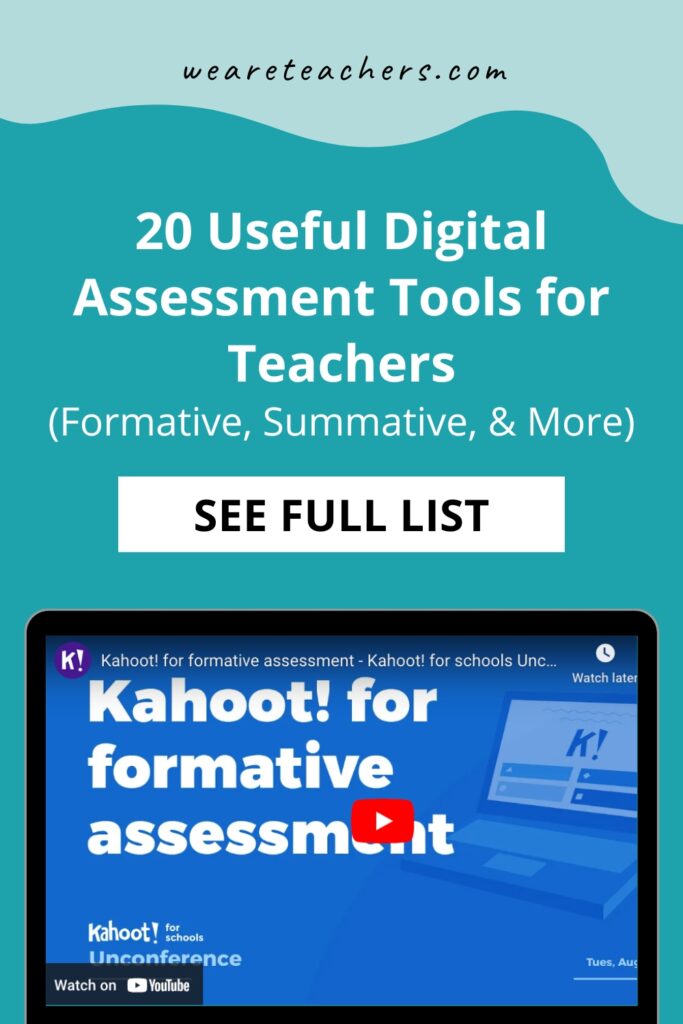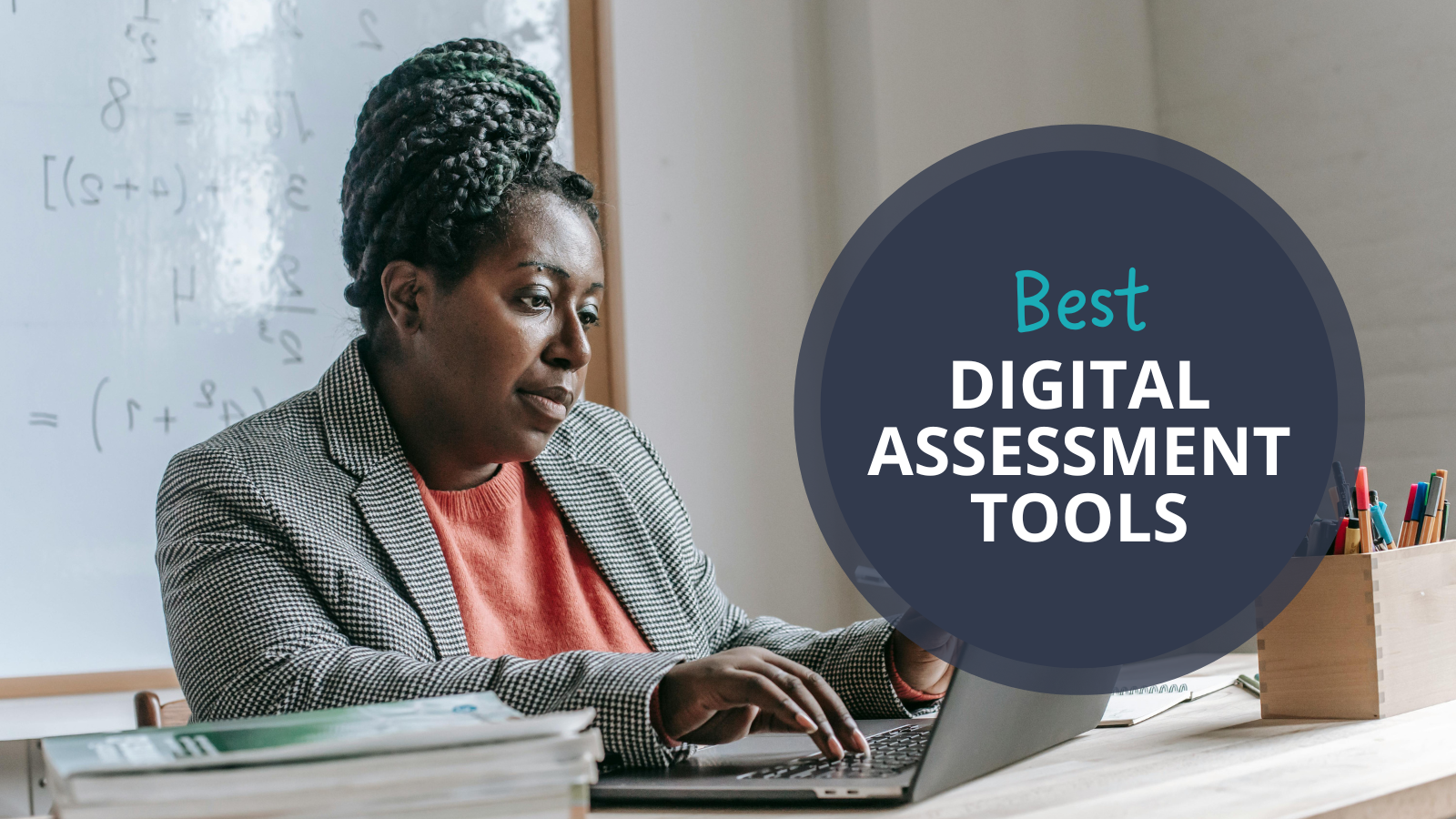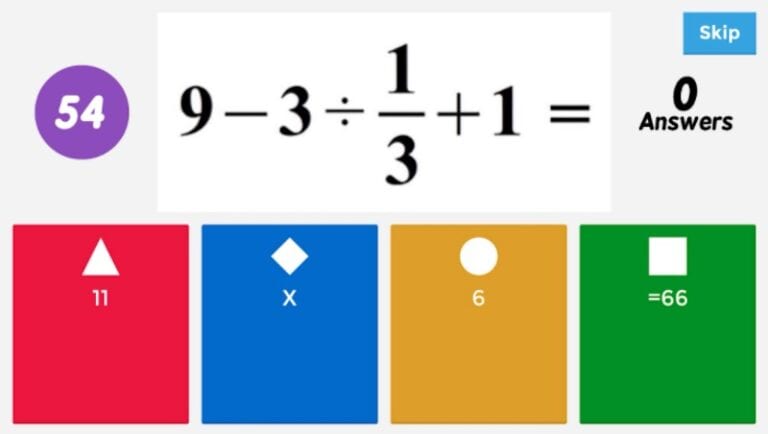Proper assessment is essential to learning. Teachers plan their lessons and activities around learning objectives, and they need ways to check that students have accomplished those goals. Assessment is more than just quizzes and tests, as any teacher knows, and these days, there are more options than ever. Using digital assessment tools for teachers save you time, engage your audience, and make life a little easier. No matter what type of assessment you need, there’s a tool to help you out. Take a look at some of our favorites.
Jump to:
- Digital Formative Assessment Tools for Teachers
- Digital Summative Assessment Tools for Teachers
- More Digital Assessment Tools for Teachers
Digital Formative Assessment Tools for Teachers
Teachers use formative assessments more than any other type, checking for understanding throughout the learning process. This allows them to adjust their teaching and learning activities to better meet student needs and find out which students need a little extra assistance. These digital formative assessment tools make it easier than ever to check in throughout any lesson or activity.
Google Forms for Exit Tickets
Goal: I want to find out what my students learned during today’s lesson.
Exit tickets are a fantastic way to find out what students gained from today’s lesson. If you want to replace the sticky note method with a digital version, try Google Forms. They’re so easy to use, and they give you an easy way to access student responses anywhere, anytime.
Kahoot!
Goal: I want to have some fun with my assessments.
This free online quiz-game generator is incredibly popular, and for good reason. Teachers show the questions, and students use the completely safe app on their own devices (like Chromebooks or smartphones) to respond. Kids absolutely love these games, making them an excellent way to ramp up classroom engagement. After the game is over, teachers can take a closer look at the results with reports to determine which items kids still need help mastering. Learn how one teacher uses Kahoot! for middle school math assessments here.
CommonLit
Goal: I want to assess reading comprehension.
CommonLit’s huge free library of reading passages comes with built-in quizzes to test for comprehension. Choose your articles by topic, reading level, or type, and assign to students. They can make annotations and use guided reading questions as they tackle the text, then finish up with a reading comprehension quiz and discussion questions.
Flip
Goal: I want to hear from my students and watch them share what they’ve learned.
Flip (formerly Flipgrid) is a social media–style video discussion platform great for generating class discussion around topics, videos, or links posted to the class grid. Students can video-record their responses to share with the teacher or class. It’s a great tool for supporting your students to make their thinking visible.
Mentimeter
Goal: I want to do a quick check-in during my lesson.
Mentimeter lets you add polls, word clouds, Q&As, and more to presentations and create an interactive experience for students, who can vote on/respond to questions and engage with the presentation in real time. This made our list because there’s so much variety in the types of formative assessments you can give in real time.
Jamboard
Goal: I want to see my students’ thought process and their answer.
Jamboard is a digital whiteboard that is compatible with Google Workspace (formerly G Suite) services. It’s a game changer for emphasizing the process of learning over the product. Math teachers love how students solve and explain their solution. If you don’t use Google, Padlet is our runner-up.
Literably
Goal: I want to listen to my students read to assess fluency.
Students read aloud and answer questions on their device (almost any device works). Within 24 hours, you get a running record with scores for accuracy, fluency, and comprehension. A free basic account includes 10 reading assessments per month.
Edpuzzle
Goal: I want to include checks for understanding as my students learn.
Edpuzzle is a video editor that allows both teachers and students to add voice-overs, comments, resources, and quizzes to existing or self-created online videos. Best part? All the students’ answers are gathered for you so you can quickly assess.
Pear Deck
Goal: I want to put checks for understanding in my slides.
Pear Deck is an interactive presentation and lesson delivery tool. Students use their devices to follow along with the teacher’s slideshow on a classroom screen. Throughout, teachers can pause at points where they’ve added interactive questions and collect real-time data about student understanding.
Quizalize
Goal: I want personalized quizzes for my students.
Quizzes are standards-tagged so you can efficiently track mastery data from every question ever answered. They support official state standards such as Common Core, TEKS, and many more. Plus, you can add hints or explanations so kids learn as they complete the assessments.
Digital Summative Assessment Tools for Teachers
Summative assessments are the formal tests and final projects that assess student learning at the end of a unit or course. There are a variety of digital tools that can make summative assessments easier, including our favorites.
Socrative
Goal: I want to give a quiz or test online.
If you’re looking for tech tools for student assessment that include plenty of options, try this one. You can include multiple-choice, true/false, and short-answer questions. We love how you see students’ results in real time, and you can add explanations if students get an answer wrong. Students can get instant feedback, or you can make the quiz self-paced or lead it yourself. Our favorite feature: Space Race, a group quiz where students “race” to cross the finish line.
Floop
Goal: I want grading to take less time.
No matter what grade and subject you teach, grading takes time that we don’t have. Enter Floop. This tool is a cloud-based website where students get annotated feedback from you and their classmates. Using any internet-connected device, students upload images of an assignment to the platform, and you put markers in places where you want feedback. Students are able to see and respond to comments, creating a feedback loop.
Naiku
Goal: I want to create standards-based assessments more quickly.
Easily create quizzes that students can answer using their mobile devices. This program also includes a bank with 60,000 standards-aligned question items and 300 pre-built assessments.
Seesaw
Goal: I want students to create online portfolios of their work.
Portfolios are a terrific summative assessment tool, allowing teachers, students, and families to look back over a collection of work and gauge progress. Paper portfolios can get lost and are harder to share and grade. Try an online version instead with a program like Seesaw.
Book Creator
Goal: I want a unique form of summative assessment.
This is another type of portfolio assessment. But rather than just collecting work as they go, students use the program to actively create a digital book showing what they’ve learned.
More Digital Assessment Tools for Teachers
For fun and interactive options, including peer feedback, try these digital assessment tools.
Rubric Maker
Goal: I want rubrics that are easy to create, use, and share.
Rubrics ensure scoring consistency across assessments. They also make self-assessment and peer feedback much easier. This online tool lets you create quality rubrics and easily share them with others.
Digital Escape Room
Goal: I want to gamify my assessments.
Escape rooms foster collaboration and communication when played by students in teams and can be a really fun way to gamify assessment. Students must work together to solve problems or answer questions, then follow the instructions to break the code. These online escape rooms are easy to build using Google Sites or Google Forms, and if you don’t want to create your own, you’ll find plenty of them available for sale on sites like Teachers Pay Teachers.
Peergrade
Goal: I want my students to give each other feedback.
Once you set up your assignment with Peergrade, pick a feedback rubric (or create your own), and select your assignment. Your students take it from there. They submit work, review each others’, and then act on the feedback. Best part? There’s a teacher overview where you can see it all.
Kaizena
Goal: I want to give voice feedback rather than writing.
Use Kaizena for both teacher and peer feedback, and save everyone a lot of time. This assessment tool lets you embed voice feedback directly into Google Docs at points of your choosing. So cool!
Jotform
Goal: I want to gather feedback about something from my students.
Digital forms can make life a lot simpler. Build a Jotform to gather feedback from students about an activity or experience, or even your own teaching and classroom experiences. The program compiles answers quickly and anonymously (if you prefer) so you can review results in a snap.
Make the most of digital assessment tools for teachers with these Tips and Tools for Making Online Assessments Work.
Want more articles like this? Subscribe to our newsletters for all the latest teaching tips and ideas!


